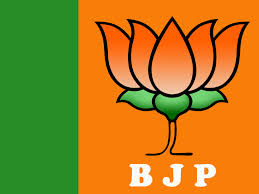Conflict is an inescapable aspect of business. The firms compete with each other when they target the same potential customers or employees. Competition is common to people, animals and companies. When a resource cannot be shared organisms compete. And the natural outcome of this is application of mind to outmaneuver or outwit the opponents. Politics comes very close to what transpires in a business situation. And there arises a need to craft a winning strategy in to action. One of the important starting points in strategy formulation process is analysis competition. Just as HUL fights P&G in dandruff shampoo space or Lenovo competes with Dell, Acer and HP in laptop market, political parties like BJP share the competitive landscape with other parties like the Congress, CPM, Samajwadi Party, JDU or AAP.
One of the important starting points in strategy formulation process is gaining a sound understanding of competitive landscape. This involves identification of players and their strategies. Logic demands that conflicts with the powerful must be avoided. And running into a conflict with a dominant player without a smart plan to dodge is an exercise in self destruction. Apple did not engage IBM directly in computers and Micromax did not create a conflict of interest with Nokia. Sun Tzu, a Chinese military strategist and general wrote that war is about planning and positioning. He emphasized the importance of knowledge: “If you know the enemy and know yourself, you need not fear the result of a hundred battles. If you know yourself but not the enemy, for every victory gained you will also suffer a defeat. If you know neither the enemy nor yourself,you will succumb in every battle”. But he laid supreme importance to winning without fighting: “The supreme art of war is to subdue the enemy without fighting.”
There are many ways in which competitive landscape can be analyzed and competitors can be identified. One such method is framework looks at players based on their market positions and strategies as: market leader, market challenger, market follower and market nicher. This framework can be useful diagnostic tool in uncovering the competitive dynamics of political landscape in India. It will be a good idea to develop strategies based on this analysis.
Leader: this position goes to the firm that enjoys highest market share, for instance Nokia and Titan are market leaders in mobile phone and wrist watch market. Congress enjoyed the largest vote share close to 28% (182 seats) in the last elections. A good leader does not rest on its laurels; rather it takes to a higher level by attacking itself and reinvention. By leading it leaves behind the follower. A good example is Intel or Gillette. Congress is taking it agenda forward by not letting the discourse on minority (Muslim reservation), oppressed (possible reservation in private sector) and poor (NAREGA) die.
Challenger: it is a position that goes to a firm that is next to the leader and enjoys strong position but not as strong as the leader. It is this reality causes this firm to challenge the leader. The BJP is the second largest party with a vote share of 19% and seat share of 116. Challenging is all about attacking the weakness or finding weakness in the strength of the leader. Jerry does not attack the weakness of Tom, rather converts his strength into weakness by shifting the place of fight. Nirma attacked HUL from the flank (economy detergent) and Ujala hit Reckitt Benckiser’s strong brand Robin by mounting a ‘by pass attack’ strategy. The current regime led by PM Manmohan Singh shows many chinks in armour of Congress led UPA which include inflation and corruption (governance deficit, trust deficit), which can be potential targets of criticism.
Follower: Like a challenger a follower is also a strong player but lacks dominance. As the name suggests its style of functioning is to join the ranks and not challenge the equilibrium. Political parties that do not differ much in their ideologies with a dominant party (inclusion, secularism, backward and minority class considerations) come in this category. For instance parties like Samajwadi (UP) Party or JDU or BSP or NCP share political discourse with the Congress. 
Nicher: A niche brand or company is the one which concentrates its efforts on a space which is left out by major players for some reasons. In the political context there are parties which focus on a small market segment (geographic or identity group). Some of the examples include TDP in Andhra Pradesh or BJD in Odisha or INLD in Haryana or Shiv Sena in Maharastra. Niche firms build their success on the basis of narrow specialization. For instance Rolex operates in super premium niche of watch market and Thorogood makes shoes for fire fighters. Anchor toothpaste occupies niche comprising of vegetarians and Creative Line woolens brand is aimed at women group of customers. Sticking to knitting is the best way forward for niche brands. Ambition to move on to a bigger market may come at the cost of their specialization which will have a corrosive effect on their core. For instance Trinamool’s active participation in Centre’s politics has shifted its centre to the periphery. Naveen Patnaik’s singular focus on Odisha exemplifies true niche strategy.
The battle for the next general elections is all set to begin and traces of minor skirmishes are becoming visible. With the Congress and the BJP pitted against each other in leader and challenger positions, the most obvious and move of least contemplation is to attach each other. But this is unlikely to yield outcomes significantly different from the outcomes of the last round of fight. The strategy does not lie in mounting more and bigger attack on each other, rather creating a paradigmatic change in the way people arrive at their preferences.






